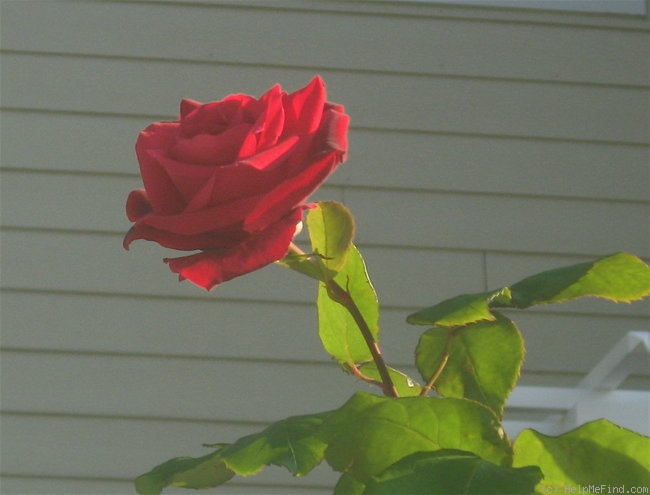|
|
'Mister Lincoln' rose Description

Photo courtesy of Lucy
HMF Ratings:
244 favorite votes.
Average rating:
EXCELLENT-.
ARS:
Dark red Hybrid Tea.
Registration name: Mister Lincoln
Exhibition name: Mister Lincoln
Bloom:
Dark red. Strong fragrance. up to 35 petals. Average diameter 5". Very large, full (26-40 petals), high-centered to cupped bloom form. Blooms in flushes throughout the season.
Habit:
Tall, upright. Matte, dark green, leathery foliage.
Height: 3' to 6'7" (90 to 200cm). Width: 2' (60cm).
Growing:
USDA zone 7a through 10b. Can be used for cut flower or garden. Hardy. vigorous. heat tolerant. Disease susceptibility: susceptible to blackspot . Spring Pruning: Remove old canes and dead or diseased wood and cut back canes that cross. In warmer climates, cut back the remaining canes by about one-third. In colder areas, you'll probably find you'll have to prune a little more than that. Requires spring freeze protection (see glossary - Spring freeze protection) . Can be grown in the ground or in a container (container requires winter protection).
Notes:
Abraham Lincoln, 16th president of the United States, was born on 12 February 1809 in Kentucky. He was assasinated in Ford's Theater on 14 April 1865.
Steven emailed the following about this rose: 'Mister Lincoln,' though vigorous with a powerful damask perfume, is susceptible to blackspot on certain occasions. The plant is so vigorous, that you merely remove the infected leaflets or leaves.
|